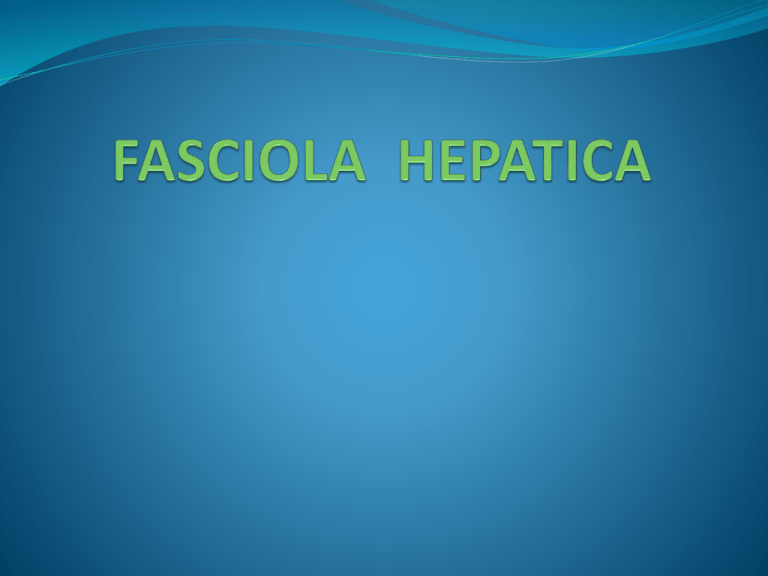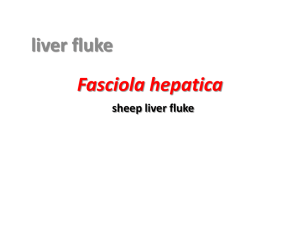FASCIOLA hepatica Lab.pptx
advertisement

FASCIOLA hepatica Disease: Fascioliasis & liver rot in animals. Distribution: - Common in cattle & sheep raising countries. FASCIOLA hepatica Definitive host : man Reservoir host: Cattle, sheep ,goats, buffaloes Habitat: Bile ducts. Intermediate host: Lymnaea snails. Infective stage : Encysted metacercaria. Mode of infection Ingestion of raw vegitation or water containing encysted metacercaria. Life cycle: Adult FASCIOLA Hepatica Egg: •Size : 140 X 70 µm. •Shape: Oval, Thin walled with operculum. • Color : Yellowish brown (bile stained). •Contents : Ovum & yolk cells (immature). Miracidium •Pyriform. •Ciliated. Lymnaea snails Cercaria (Leptocercus) Last larval stage inside the snail. No sexual organs. Cystogenous glands (help in passing out of snail & in encysting on vegetations or water). Tail: simple & helps in leaving the snail. Encysted Metacercaria Without tail. Surrounded by a cyst wall. Clinical Picture : Fever. Pain & tenderness in right hypochondrium. Biliary colics. Hepatomegaly, Jaundice. Vomiting & diarrhoea. Toxaemia. Anaemia & eosinophilia. Diagnosis I. Clinically : A highly suggestive tetrad of: Fever. Hepatomegaly. Pain & tenderness in the right hypochondrium. Eosinophilia. Diagnosis II- Laboratory : a. Direct methods 1. Stool examination by direct smear & concentration methods to find the characteristic eggs. 2. Bile aspiration from the duodenum & examine for eggs. 3. US. 4. Computerized tomography (C.T). Diagnosis Diagnosis b. Indirect Methods ELISA, IHA ,CIEP Eosinophilia. Thank You











